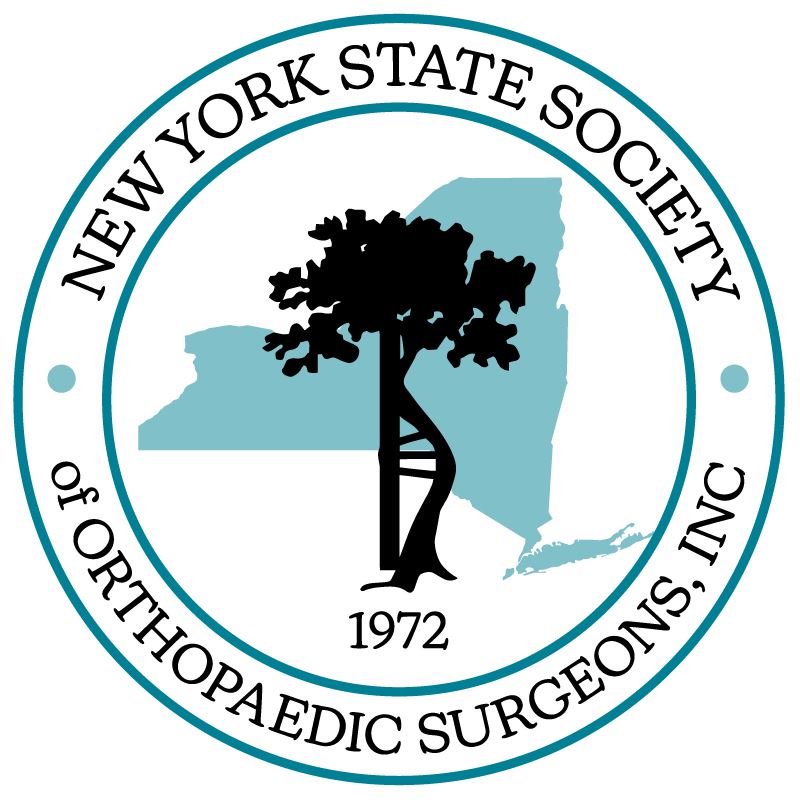
NYS SOciety of ORTHOPAEDIC Surgeons
Orthopaedic Surgeons: Who Are They and What Do They Do?
Why Choose an Orthopaedic Surgeon?
|
Back pain, sports injuries, arthritic hips and knees, and stiff neck muscles are just a few of the musculoskeletal conditions that have an enormous impact on Americans and the entire health care system. Accounting for approximately 135 million ambulatory health care visits, more than 3 million hospitalizations, nearly $245 billion dollars in medical costs and 488 million days of restricted work activity each year, musculoskeletal ailments comprise more than 14 percent of the health care dollar. For the proper diagnosis and most appropriate treatment options for musculoskeletal conditions, it is important to consult an orthopaedic surgeon. |
Who is an Orthopaedic Surgeon?
|
An orthopaedic surgeon is a physician devoted to the diagnosis, treatment, prevention and rehabilitation of injuries, disorders and diseases of the body’s musculoskeletal system. This system includes bones, joints, ligaments, muscles, nerves and tendons. While orthopaedic surgeons are familiar with all aspects of the musculoskeletal system, many orthopaedists specialize in certain areas, such as the foot and ankle, hand, shoulder and elbow, spine, hip or knee. Orthopaedic surgeons may also choose to focus on specific fields like pediatrics, trauma, reconstructive surgery, oncology (bone tumors) or sports medicine. |
Education and Training
|
An orthopaedic surgeon has extensive training in the proper diagnosis and non-surgical and surgical treatment of injuries and diseases of the musculoskeletal system. Orthopaedic surgeons have completed approximately 14 years of formal education:
Board certification is a very important step following completion of the orthopaedic training program. To become board certified, an orthopaedic surgeon must undergo a peer-review process, and then demonstrate his/her expertise in orthopaedics by passing both oral and written examinations given by the American Board of Orthopaedic Surgery. It is important to visit orthopaedic surgeons who are either board certified or in the process of becoming certified (board eligible). Because orthopaedic surgeons complete a rigorous re-certification process every 10 years, they spend many hours studying and attending continuing medical education courses to maintain current orthopaedic knowledge and skills. |
Who does an Orthopaedic Surgeon Treat?
|
Orthopaedic surgeons treat patients of all ages – newborns, children, athletes, baby boomers and the elderly – with conditions that range from bone and joint disorders and fractures to diseases or tears of the muscles, ligaments and tendons in all regions of the body. It is essential that patients and their families develop partnerships with their physicians. This will help ensure that decisions about medical treatments honor the patients’ wants, needs, preferences and values. Orthopaedic surgeons respect the value of diversity and are committed to serving communities and individuals with unique needs. |
What does an Orthopaedic Surgeon Treat?
|
An orthopaedic surgeon treats many musculoskeletal conditions without surgery, by using medications, exercise and other rehabilitative or alternative therapies. If necessary, he/she may also recommend surgical treatment if the patient does not respond to other treatments. Some of the conditions and diseases an orthopaedic surgeon treats include:
|
What Types of Surgeries do Orthopaedic Surgeons Perform?
|
Orthopaedic surgeons perform numerous types of surgeries on patients. Common surgeries include:
|
What Should a Patient Expect from a Visit with an Orthopaedic Surgeon?
|
In general, visits with an orthopaedic surgeon start with a personal interview, physical examination and review of previous records or tests. This may be followed by additional diagnostic exams, such as blood tests, X-rays or other images. For most orthopaedic conditions and injuries there may be more than one form of treatment. The orthopaedic surgeon will discuss treatment options with the patient to mutually determine the plan best suited for his/her health and lifestyle. |
About the SocietyAdvocating for the orthopaedic surgeon, patients and musculoskeletal health in New York. |